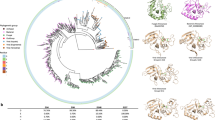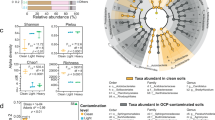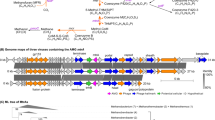Abstract
Virus-encoded auxiliary metabolic genes (AMGs) are non-essential genes that increase viral fitness by maintaining or manipulating host metabolism during infection. AMGs are intriguing from an evolutionary perspective, as most viral genomes are highly compact and have limited coding capacity for accessory genes. Advances in viral (meta)genomics have expanded the detection of putative AMGs from viruses in diverse environments. However, this has also led to many instances of misannotation due to the limitations of annotation tools, resulting in misinterpretations about the roles of some viral genes. Here, we highlight studies that support claims about AMGs with more than just function predictions for guidance on best practices. We then propose the adoption of an expanded, inclusive view of all genes auxiliary to core viral functions with the term ‘auxiliary viral genes’ (AVGs), alongside an associated eco-evolutionary framework for considering the types of analyses that can better support claims made about AVGs.
This is a preview of subscription content, access via your institution
Access options
Access Nature and 54 other Nature Portfolio journals
Get Nature+, our best-value online-access subscription
$32.99 / 30 days
cancel any time
Subscribe to this journal
Receive 12 digital issues and online access to articles
$119.00 per year
only $9.92 per issue
Buy this article
- Purchase on SpringerLink
- Instant access to full article PDF
Prices may be subject to local taxes which are calculated during checkout



Similar content being viewed by others
References
Breitbart, M., Thompson, L., Suttle, C. & Sullivan, M. Exploring the vast diversity of marine viruses. Oceanography 20, 135–139 (2007).
Koonin, E. V., Dolja, V. V. & Krupovic, M. The logic of virus evolution. Cell Host Microbe 30, 917–929 (2022).
Mann, N. H., Cook, A., Millard, A., Bailey, S. & Clokie, M. Bacterial photosynthesis genes in a virus. Nature 424, 741–741 (2003).
Lindell, D., Jaffe, J. D., Johnson, Z. I., Church, G. M. & Chisholm, S. W. Photosynthesis genes in marine viruses yield proteins during host infection. Nature 438, 86–89 (2005).
Anantharaman, K. et al. Sulfur oxidation genes in diverse deep-sea viruses. Science 344, 757–760 (2014).
Ahlgren, N. A., Fuchsman, C. A., Rocap, G. & Fuhrman, J. A. Discovery of several novel, widespread and ecologically distinct marine Thaumarchaeota viruses that encode amoC nitrification genes. ISME J. 13, 618–631 (2019).
Zhong, Z.-P. et al. Viral potential to modulate microbial methane metabolism varies by habitat. Nat. Commun. 15, 1857 (2024).
Wu, Z. et al. Unveiling the unknown viral world in groundwater. Nat. Commun. 15, 6788 (2024).
Chen, L.-X. et al. Large freshwater phages with the potential to augment aerobic methane oxidation. Nat. Microbiol. 5, 1504–1515 (2020).
Tian, F. et al. Prokaryotic-virus-encoded auxiliary metabolic genes throughout the global oceans. Microbiome 12, 159 (2024).
Friedberg, I. Automated protein function prediction—the genomic challenge. Brief Bioinform. 7, 225–242 (2006).
Shaffer, M. et al. DRAM for distilling microbial metabolism to automate the curation of microbiome function. Nucleic Acids Res. 48, 8883–8900 (2020).
Pratama, A. A. et al. Expanding standards in viromics: in silico evaluation of dsDNA viral genome identification, classification, and auxiliary metabolic gene curation. PeerJ 9, e11447 (2021).
Kieft, K., Zhou, Z. & Anantharaman, K. VIBRANT: automated recovery, annotation and curation of microbial viruses, and evaluation of viral community function from genomic sequences. Microbiome 8, 90 (2020).
Cantarel, B. L. et al. The Carbohydrate-Active EnZymes database (CAZy): an expert resource for glycogenomics. Nucleic Acids Res. 37, D233–D238 (2009).
ter Horst, A. M. et al. Minnesota peat viromes reveal terrestrial and aquatic niche partitioning for local and global viral populations. Microbiome 9, 233 (2021).
Smug, B. J., Szczepaniak, K., Rocha, E. P. C., Dunin-Horkawicz, S. & Mostowy, R. J. Ongoing shuffling of protein fragments diversifies core viral functions linked to interactions with bacterial hosts. Nat. Commun. 14, 7460 (2023).
Mistry, J. et al. Pfam: the protein families database in 2021. Nucleic Acids Res. 49, D412–D419 (2021).
Venceslau, S. S., Stockdreher, Y., Dahl, C. & Pereira, I. A. C. The ‘bacterial heterodisulfide’ DsrC is a key protein in dissimilatory sulfur metabolism. Biochim. Biophys. Acta 1837, 1148–1164 (2014).
Ikeuchi, Y., Shigi, N., Kato, J., Nishimura, A. & Suzuki, T. Mechanistic insights into sulfur relay by multiple sulfur mediators involved in thiouridine biosynthesis at tRNA wobble positions. Mol. Cell 21, 97–108 (2006).
Nakayashiki, T. et al. The tRNA thiolation pathway modulates the intracellular redox state in Escherichia coli. J. Bacteriol. 195, 2039–2049 (2013).
Camargo, A. P. et al. IMG/VR v4: an expanded database of uncultivated virus genomes within a framework of extensive functional, taxonomic and ecological metadata. Nucleic Acids Res. 51, D733–D743 (2023).
Sazinas, P. et al. Comparative genomics of bacteriophage of the genus Seuratvirus. Genome Biol. Evol. 10, 72–76 (2017).
Han, Z. et al. Structural insights into a spindle-shaped archaeal virus with a sevenfold symmetrical tail. Proc. Natl Acad. Sci. USA 119, e2119439119 (2022).
Hughes, K. A., Sutherland, I. W. & Jones, M. V. Biofilm susceptibility to bacteriophage attack: the role of phage-borne polysaccharide depolymerase. Microbiology 144, 3039–3047 (1998).
Piacente, F. et al. Giant DNA virus mimivirus encodes pathway for biosynthesis of unusual sugar 4-amino-4,6-dideoxy-d-glucose (Viosamine). J. Biol. Chem. 287, 3009–3018 (2012).
Cahill, J. & Young, R. Phage lysis: multiple genes for multiple barriers. Adv. Virus Res. 103, 33–70 (2019).
Holm, L. & Sander, C. Structural similarity of plant chitinase and lysozymes from animals and phage. FEBS Lett. 340, 129–132 (1994).
Monzingo, A. F., Marcotte, E. M., Hart, P. J. & Robertas, J. D. Chitinases, chitosanases and lysozymes can be divided into procaryotic and eucaryotic families sharing a conserved core. Nat. Struct. Mol. Biol. 3, 133–140 (1996).
Boller, T., Gehri, A., Mauch, F. & Vögeli, U. Chitinase in bean leaves: induction by ethylene, purification, properties and possible function. Planta 157, 22–31 (1983).
Wu, R. et al. Structural characterization of a soil viral auxiliary metabolic gene product—a functional chitosanase. Nat. Commun. 13, 5485 (2022).
Zhang, H. et al. dbCAN2: a meta server for automated carbohydrate-active enzyme annotation. Nucleic Acids Res. 46, W95–W101 (2018).
Graham, E. H. et al. The persistence and stabilization of auxiliary genes in the human skin virome. Virol. J. 20, 49 (2023).
Anderson, C. L., Sullivan, M. B. & Fernando, S. C. Dietary energy drives the dynamic response of bovine rumen viral communities. Microbiome 5, 155 (2017).
He, Y. et al. Viral communities in a pH > 10 serpentinite-like environment: insight into diversity and potential roles in modulating the microbiomes by bioactive vitamin B9 synthesis. Appl. Environ. Microbiol. 90, e00850-24 (2024).
Thompson, L. R. et al. Phage auxiliary metabolic genes and the redirection of cyanobacterial host carbon metabolism. Proc. Natl Acad. Sci. USA 108, E757–E764 (2011).
Hurwitz, B. L., Hallam, S. J. & Sullivan, M. B. Metabolic reprogramming by viruses in the sunlit and dark ocean. Genome Biol. 14, R123 (2013).
Howard-Varona, C. et al. Phage-specific metabolic reprogramming of virocells. ISME J. 14, 881–895 (2020).
Schwartz, D. A. et al. Human-gut phages harbor sporulation genes. mBio 14, e00182-23 (2023).
Kieft, K., Adams, A., Salamzade, R., Kalan, L. & Anantharaman, K. vRhyme enables binning of viral genomes from metagenomes. Nucleic Acids Res. 50, e83 (2022).
Rinke, C. et al. A standardized archaeal taxonomy for the Genome Taxonomy Database. Nat. Microbiol. 6, 946–959 (2021).
Roux, S. et al. Ecogenomics and potential biogeochemical impacts of globally abundant ocean viruses. Nature 537, 689–693 (2016).
Sullivan, M. B. et al. Prevalence and evolution of core photosystem II genes in marine cyanobacterial viruses and their hosts. PLoS Biol. 4, e234 (2006).
Zhao, J. et al. Macroalgal virosphere assists with host-microbiome equilibrium regulation and affects prokaryotes in surrounding marine environments. ISME J. 18, wrae083 (2024).
Wang, C., Zheng, R., Zhang, T. & Sun, C. Polysaccharides induce deep-sea Lentisphaerae strains to release chronic bacteriophages. eLife 13, RP92345 (2024).
Lee, S., Sieradzki, E. T., Nicol, G. W. & Hazard, C. Propagation of viral genomes by replicating ammonia-oxidising archaea during soil nitrification. ISME J. 17, 309–314 (2023).
Lee, S., Hazard, C. & Nicol, G. W. Activity of novel virus families infecting soil nitrifiers is concomitant with host niche differentiation. ISME J. 18, wrae205 (2024).
Puxty, R. J., Evans, D. J., Millard, A. D. & Scanlan, D. J. Energy limitation of cyanophage development: implications for marine carbon cycling. ISME J. 12, 1273–1286 (2018).
Sharon, I. et al. Viral photosynthetic reaction center genes and transcripts in the marine environment. ISME J. 1, 492–501 (2007).
Fridman, S. et al. A myovirus encoding both photosystem I and II proteins enhances cyclic electron flow in infected Prochlorococcus cells. Nat. Microbiol. 2, 1350–1357 (2017).
Dammeyer, T., Bagby, S. C., Sullivan, M. B., Chisholm, S. W. & Frankenberg-Dinkel, N. Efficient phage-mediated pigment biosynthesis in oceanic cyanobacteria. Curr. Biol. 18, 442–448 (2008).
Needham, D. M. et al. A distinct lineage of giant viruses brings a rhodopsin photosystem to unicellular marine predators. Proc. Natl Acad. Sci. USA 116, 20574–20583 (2019).
Monier, A. et al. Host-derived viral transporter protein for nitrogen uptake in infected marine phytoplankton. Proc. Natl Acad. Sci. USA 114, E7489–E7498 (2017).
Liang, J.-L. et al. Hidden diversity and potential ecological function of phosphorus acquisition genes in widespread terrestrial bacteriophages. Nat. Commun. 15, 2827 (2024).
Zhao, F. et al. Biochemical and structural characterization of the cyanophage-encoded phosphate-binding protein: implications for enhanced phosphate uptake of infected cyanobacteria. Environ. Microbiol. 24, 3037–3050 (2022).
Zheng, X. et al. Organochlorine contamination enriches virus-encoded metabolism and pesticide degradation associated auxiliary genes in soil microbiomes. ISME J. 16, 1397–1408 (2022).
Brüssow, H., Canchaya, C. & Hardt, W.-D. Phages and the evolution of bacterial pathogens: from genomic rearrangements to lysogenic conversion. Microbiol. Mol. Biol. Rev. 68, 560–602 (2004).
Pfeifer, E., Bonnin, R. A. & Rocha, E. P. C. Phage-plasmids spread antibiotic resistance genes through infection and lysogenic conversion. mBio 13, e01851–22 (2022).
Luo, X.-Q. et al. Viral community-wide auxiliary metabolic genes differ by lifestyles, habitats and hosts. Microbiome 10, 190 (2022).
Acknowledgements
We thank members of the Anantharaman, Roux and Emerson laboratories for helpful discussions. C.M. was funded by a National Science Foundation Graduate Research Fellowship and by a UW-Madison SciMed Graduate Research Fellowship. This work was supported by the National Institute of General Medical Sciences of the National Institutes of Health under award no. R35GM143024 (to K.A.), by the US Department of Energy (DOE), Office of Science, Office of Biological and Environmental Research (BER), Genomic Science Program, award no. DE-SC0021198 (to J.B.E.), and by the US DOE, Office of Science, Biological and Environmental Research, Early Career Research Program awarded under UC-DOE prime contract DE-AC02-05CH11231 (to S.R.). The work conducted by the US DOE Joint Genome Institute (https://ror.org/04xm1d337), a DOE Office of Science User Facility, is supported by the Office of Science of the US DOE operated under contract no. DE-AC02-05CH11231.
Author information
Authors and Affiliations
Contributions
All authors conceptualized the content and direction of the manuscript. C.M. and K.A. wrote the manuscript draft. J.B.E., S.R. and K.A. provided content feedback. All authors reviewed, edited and approved the manuscript.
Corresponding authors
Ethics declarations
Competing interests
The authors declare no competing interests.
Peer review
Peer review information
Nature Microbiology thanks Rafal Mostowy and the other, anonymous, reviewer(s) for their contribution to the peer review of this work.
Additional information
Publisher’s note Springer Nature remains neutral with regard to jurisdictional claims in published maps and institutional affiliations.
Rights and permissions
Springer Nature or its licensor (e.g. a society or other partner) holds exclusive rights to this article under a publishing agreement with the author(s) or other rightsholder(s); author self-archiving of the accepted manuscript version of this article is solely governed by the terms of such publishing agreement and applicable law.
About this article
Cite this article
Martin, C., Emerson, J.B., Roux, S. et al. A call for caution in the biological interpretation of viral auxiliary metabolic genes. Nat Microbiol 10, 2122–2129 (2025). https://doi.org/10.1038/s41564-025-02095-4
Received:
Accepted:
Published:
Issue date:
DOI: https://doi.org/10.1038/s41564-025-02095-4



